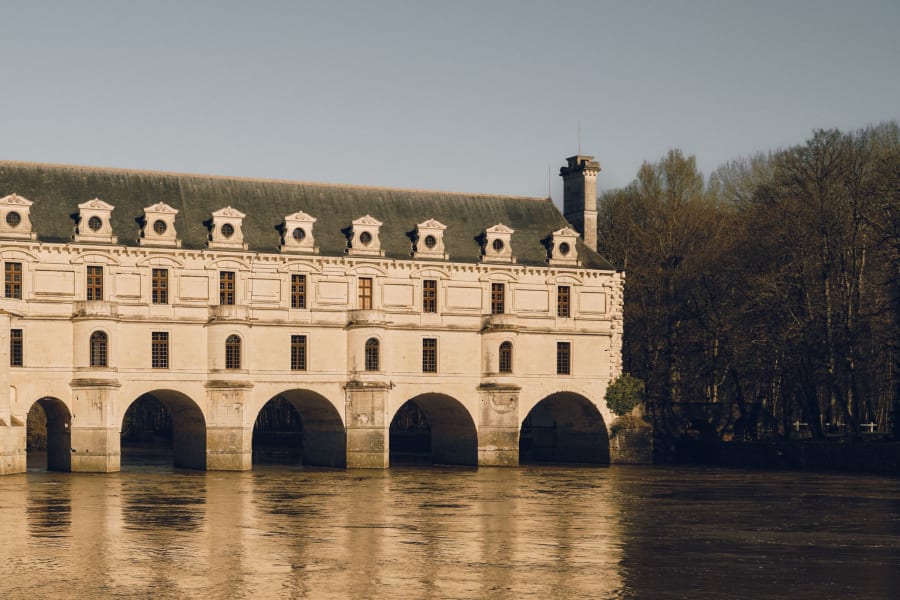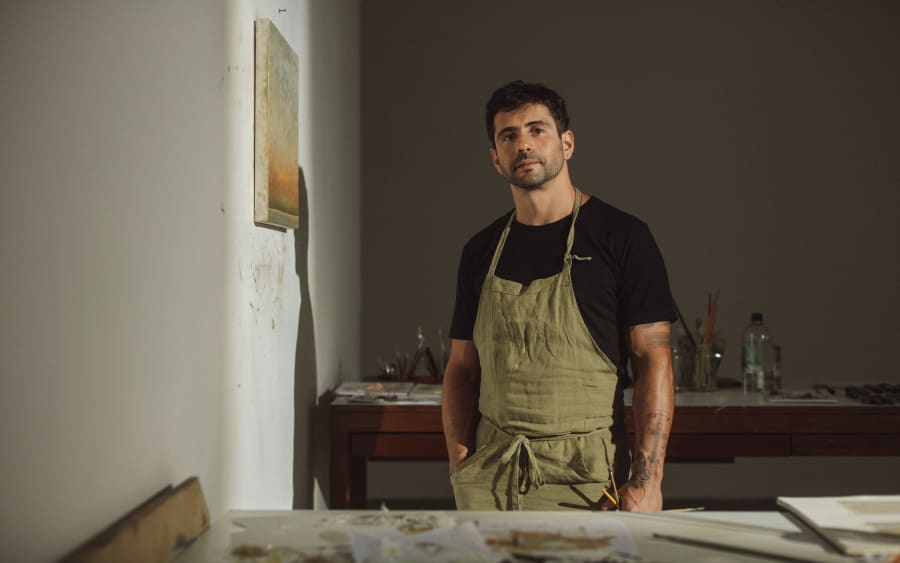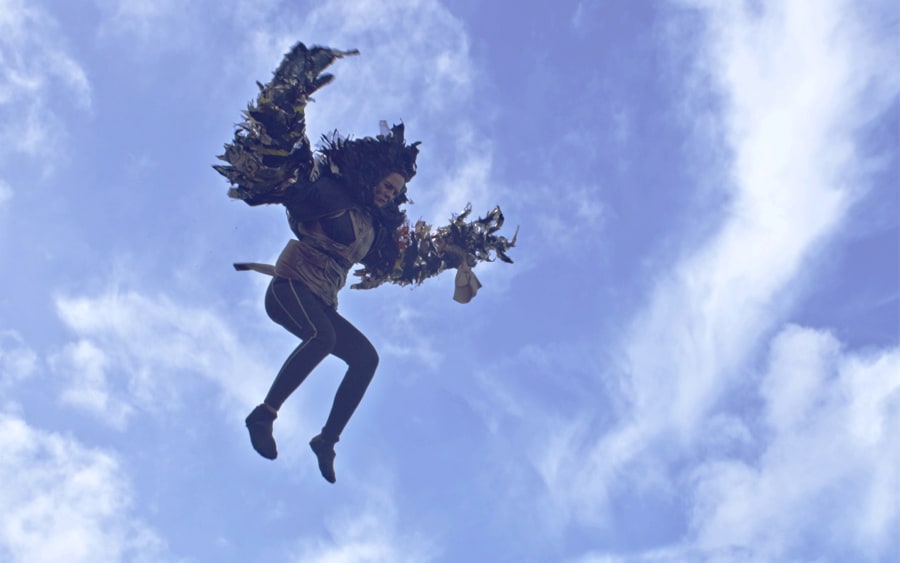On a sun-drenched Monday in April, Christophe Leribault has just returned from Madrid, where he presided over the Network of European Royal Residences. A few hours later, he reconvened with his team to address the thousand questions that arise each day at the world’s most famous château: Versailles, the 17th-century French royal residence of which he is in charge. Will they discuss a Louis XV fire screen, the restoration of a fountain, the opera house, or film shoots? Perhaps they’ll address the artificial intelligence project allowing the estate’s statues to speak, or the campus being developed that will be dedicated to artisanal crafts. ‘Each hour brings its own meeting,’ he smiles. ‘There are countless matters to attend to, which makes managing a château-museum truly unique.’
In March 2024, Leribault was appointed president of the public institution overseeing the palace, museum, and national estate of Versailles. More than a national monument – more of an entire world. To succeed Catherine Pégard, they needed to find ‘a rare bird, someone both impeccably versed in the Sun King and capable of piloting a thousand-person war machine,’ as Le Monde noted. At the time, the dynamic 61-year-old curator was directing the Musée d’Orsay, a post he had held since 2021. This art historian specializing in the 18th century, now knows every corner of Versailles and has made it his mission to reveal the entirety of its complex richness.
‘Beyond the palace itself, we oversee a park, the Marly estate, two enormous stables housing schools and an equestrian academy, a carriage museum, a sculpture and mold museum, the recently restored royal tennis court which is now open to the public, both Trianon palaces, greenhouses and orangeries, a rowing club, a luxury hotel, and dozens upon dozens of buildings. My role is to coordinate the various departments managing each entity.’ The task fascinates him but leaves him little time to rest.
Until now, Leribault was strictly a museum man: He had moved through Musée Carnavalet, Musée national Eugène Delacroix, and the Petit Palais – a sleeping beauty he successfully reawakened. At Versailles, the challenges are entirely different. ‘The hanging of artworks is much more constrained; we can’t turn everything upside down. And above all, the question of structural restoration is paramount.’ Upon arrival, he was besieged with requests concerning all the fragile buildings. It falls to him to prioritize. Chief among them: refurbishing the Grand Trianon’s roofs, last undertaken more than 60 years ago. Another priority is refurnishing this residence which was so beloved by Louis XIV and his secret wife, Madame de Maintenon, and whose entire furniture collection was auctioned during the Revolution. But what preoccupies him the most is a project that is ‘enormous and hardly glamorous: updating the electrical and heating systems.’ Initiated 20 years ago, it presents quite the challenge within this historical layer cake. ‘It’s not easy finding patrons for hundreds of kilometers of pipes and wiring! It’s terribly expensive for a result that should be invisible. But if we do nothing, in 20 or 40 years, everything could disappear.’
After the opera house (between 2007 and 2009) and the Queen’s appartments (between 2015 and 2019), work will soon begin on the key sites: the King’s apartments, the chambers of Madame de Pompadour and du Barry (both influential successive companions of Louis XV), and the Hall of Mirrors. ‘The visitor route will be impacted, but we cannot indefinitely postpone work on the most iconic rooms. It’s up to us to offer alternatives to visitors.’ New technologies are part of the solution: ‘Louis XIV conceived Versailles as the ultimate leisure destination; we’re not really going off piste by offering virtual reality experiences of vanished places, from the Grotto of Thetis to the maze.’ He isn’t afraid to proclaim that this domain is ‘a full experience, not limited to Marie-Antoinette’s bed and Louis XV’s desk. The fireworks, the grand fountains, are part of its spirit, like state dinners or Olympic equestrian events: A place we must keep alive for all audiences, keeping them spellbound.’
Hence his desire to reinvent and diversify the visitor experience. ‘Our eight million visitors, 80% of whom are foreigners, should depart with stars in their eyes, regardless of age. They should never leave with nothing, whether they had booked in advance or not. But we must also encourage French people and Parisians to come and to keep on returning, because this palace has much to tell us about our era, beyond just the Hall of Mirrors.’ Thus, to celebrate the 150th anniversary of the Third Republic (1870–1940), Leribault has opened up the Congress Chamber each weekend. ‘I arrived here the day abortion rights were enshrined in the constitution; I witnessed Versailles teeming with deputies and senators. It was quite striking and gave me this idea: a lesson in civic life at a moment when our parliamentary life proves complex.’
What about contemporary art? ‘It’s a real tradition at Versailles,’ acknowledges the man who welcomed Jean-Michel Othoniel and Yan Pei-Ming to the Petit Palais, and Peter Doig and Nathanaëlle Herbelin to Musée d’Orsay. He certainly intends to continue with this, without necessarily ‘featuring a star every year. Rather, it’s about finding artists who accept a rich, original dialogue with the place.’ Guillaume Bresson kicks off this initiative – ‘the first contemporary painter at the château,’ Leribault emphasizes. ‘My idea is to juxtapose the violence of suburban neighborhoods depicted in his canvases with the colonial violence portrayed by Horace Vernet in the rooms dedicated to the conquest of Algeria.’
Typically, the immense war frescoes in these Africa Rooms are hidden behind barriers to accommodate temporary exhibitions, as are those in the neighboring Crimea and Italy Rooms. Here lies another of his objectives: ‘Finding funds to relocate exhibitions to other unadorned spaces, directly accessible from the courtyard.’ This would allow these rooms, which constitute the museum of history conceived by Louis-Philippe in 1833, to welcome the public in the way originally intended. ‘Together with the Crusades Rooms and the ones dedicated to the wars in Italy and Crimea that will be recreated, they make up an ensemble of settings which are unloved, heavily charged, and problematic. But these can be recontextualized as a platform from which to assess the diplomatic and colonial history of the great powers who divided up the world – the root of major global conflicts. Revealing them and giving them meaning seems more interesting to me than hiding things.’
Emmanuelle Lequeux is a writer based in Paris.
English translation: Art Basel.
Published on April 29, 2025.
Caption for header image: Christophe Leribault in Versailles, April 2025. Photography by Inès Manai for Art Basel.


